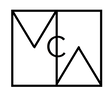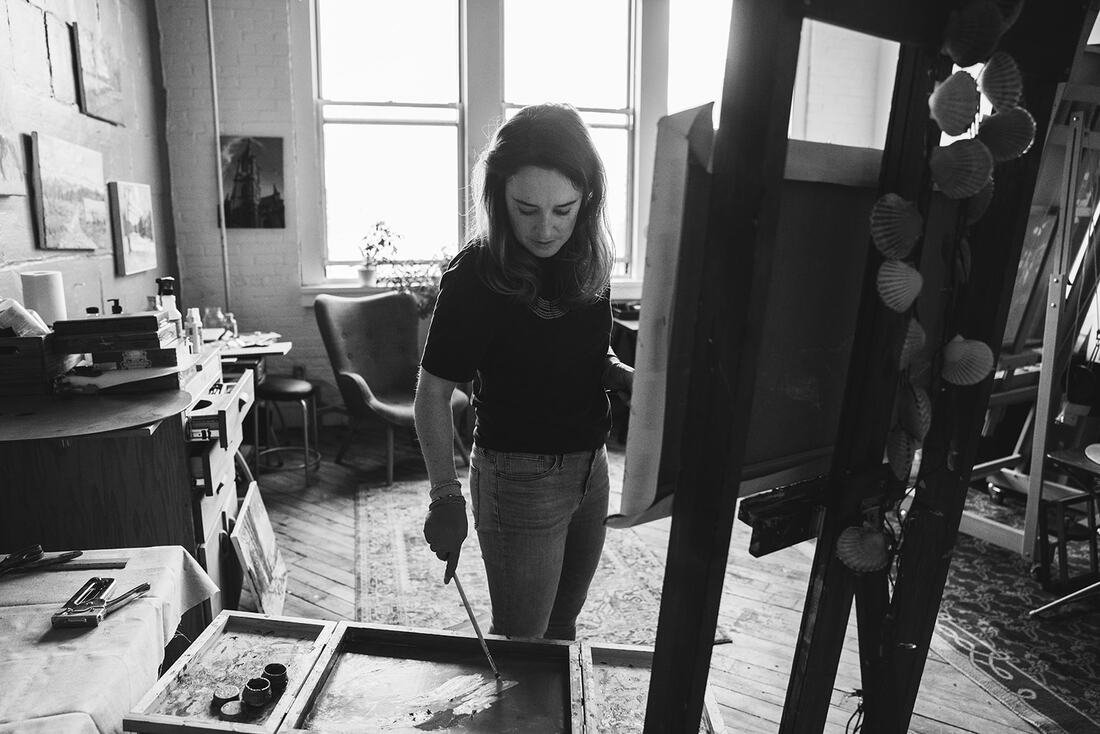
I make paintings as a response to the spaces and structures before me.
While my work follows a tradition of representational landscape painting, I aim to convey places as they are in the present. Light conditions and atmosphere lead the way when selecting a subject. An illuminated pane or a dynamic shadow can render an otherwise mundane scene compelling enough to hold that moment in time on the surface of a canvas.
I studied architecture and museum curating and worked in the cultural heritage sector for over a decade before deciding to pursue art full-time. My interest in the built environment and curating continues to impact my work as an artist, just as my experience as a painter has informed my approach to interpreting art and architecture.
I prefer to paint subjects en plein air; there is endless information to glean from working onsite, and the adventure of painting outdoors in all seasons fuels my work and travels. For larger pieces, I often compose the scene from smaller studies and use those as references for the final studio painting.
While I tend to depict spaces devoid of people, the influence of humans is always present in my work. Buildings and infrastructure carry the imprints of those who have created and moved through them. Even the natural landscape—punctuated by roads, paths, barriers, and clearings —carries the mark of people. In wilder spaces, we are still influencing the atmosphere, temperature, and weather patterns. Painting the world as it is speaks to the human imprint upon our landscape, as well as to our ability—and responsibility—to protect it.
While my work follows a tradition of representational landscape painting, I aim to convey places as they are in the present. Light conditions and atmosphere lead the way when selecting a subject. An illuminated pane or a dynamic shadow can render an otherwise mundane scene compelling enough to hold that moment in time on the surface of a canvas.
I studied architecture and museum curating and worked in the cultural heritage sector for over a decade before deciding to pursue art full-time. My interest in the built environment and curating continues to impact my work as an artist, just as my experience as a painter has informed my approach to interpreting art and architecture.
I prefer to paint subjects en plein air; there is endless information to glean from working onsite, and the adventure of painting outdoors in all seasons fuels my work and travels. For larger pieces, I often compose the scene from smaller studies and use those as references for the final studio painting.
While I tend to depict spaces devoid of people, the influence of humans is always present in my work. Buildings and infrastructure carry the imprints of those who have created and moved through them. Even the natural landscape—punctuated by roads, paths, barriers, and clearings —carries the mark of people. In wilder spaces, we are still influencing the atmosphere, temperature, and weather patterns. Painting the world as it is speaks to the human imprint upon our landscape, as well as to our ability—and responsibility—to protect it.
Artist photography by Gina Brocker

